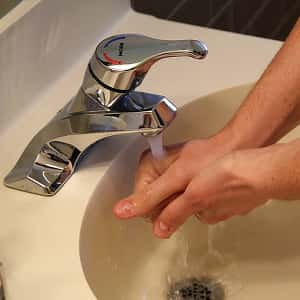
If you burn yourself in the kitchen, what’s the first thing you do? It is helpful to know first aid for a burn consists, first, of cold water. Here’s one reader’s experience with this essential remedy.
First Aid for a Burn–Cold Water:
Q. I read in your column about a woman who burned her hand on a curling iron. She used cold soy sauce to relieve the pain.
Many years ago, I absent-mindedly poured boiling water from the tea kettle over my hand instead of in the mug. The pain was incredible.
I grabbed a large pot and filled it with ice and water. I put my hand in the icy water to relieve the pain. When the hand got numb, I took it out of the water and when it started to hurt again I would submerge my hand again. I continued this for a couple of hours until the pain was gone. My hand never blistered or showed signs of a burn.
Ice Water as First Aid for a Burn?
A. An article in JAMA (Aug. 27, 1960) recommended ice water as first aid for burns.
The physician reported
“In each of 150 cases, pain was immediately relieved and the extent of the redness and blistering visibly reduced. Local cooling was continued for several hours, until pain no longer returned when the part was taken out of the bath… This form of treatment has advantages in emergency care for lesser burns, since it is easily available, inexpensive, humane, and promptly effective.”
More recent first-aid advice suggests cool water without ice.
An animal study showed that ice water cooling
“is associated with an increase in tissue damage” (Burns, Nov. 2007).
The temperature of cold tap water appears to be nearly ideal for use as first aid for a burn (Wound Repair and Regeneration, Sep-Oct. 2008). The scientists found that the burn will heal best if kept under cold tap water for at least 20 minutes.
We still believe that either soy sauce or yellow mustard can be applied after the cold water treatment to further reduce pain and redness. A serious burn requires immediate medical attention.

